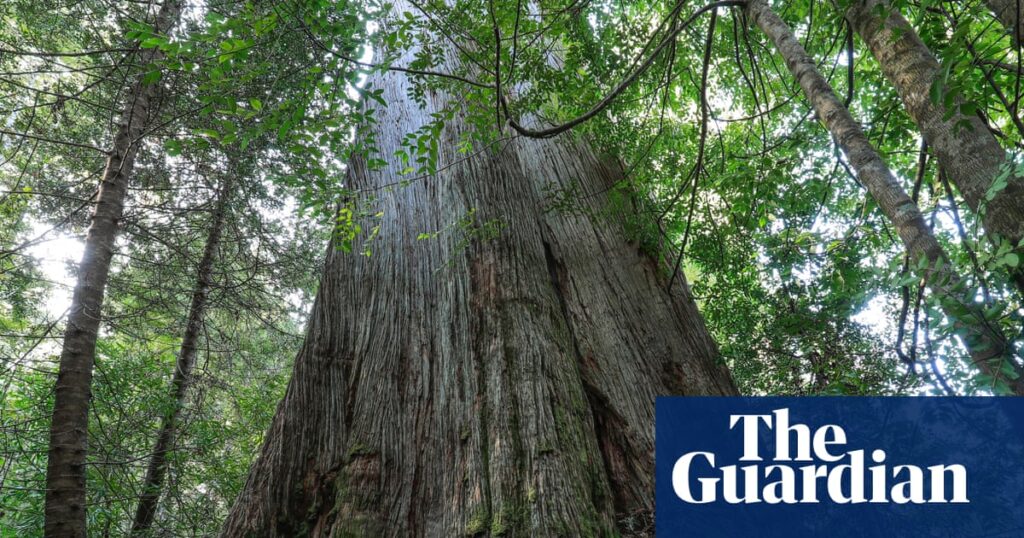
The Albanese government is facing mounting pressure to halt old growth logging as part of its strategy to meet a 2035 emissions reduction target. This recommendation comes from the Climate Change Authority, which suggests that such a move is essential to achieving a 62% to 70% reduction in emissions.
Professor David Lindenmayer, a leading forest scientist from the Australian National University, has taken the step of writing to the authority to question why their advice did not go further by recommending a complete cessation of native forest logging. Lindenmayer’s concerns highlight the significant role that forest conservation could play in reducing greenhouse gas emissions.
Report Findings and Government Response
The Climate Change Authority’s report, released last week, outlines that ending old growth logging and reducing re-clearing rates could contribute approximately 6% of the necessary emissions reductions. Despite this, Environment Minister Murray Watt indicated on ABC radio in Tasmania that the government does not intend to stop old growth logging entirely.
In contrast, the Greens, represented by Tasmanian Senator Nick McKim, argue that the authority’s advice clearly indicates that even the lower target of a 62% reduction cannot be met without at least ending old growth logging. McKim emphasized the need for the government to set a definitive end date for old growth logging or to explain alternative measures to achieve the emissions target.
State-Level Actions and Economic Implications
Some Australian states, such as New South Wales, have already implemented restrictions on logging in identified old growth forests. However, logging of other high conservation value native forests continues. The Greens advocate for a complete ban on native forest logging, urging the government to incorporate this into upcoming environmental law reforms.
McKim argues that ending native logging and curbing land-clearing are among the most cost-effective and rapid methods to cut emissions and protect biodiversity. He points to New South Wales, where the Minns government has introduced an economic transition package for communities affected by logging moratoriums, as a model for how this transition can be managed.
“You could end native forest logging literally in months and it would have a massive emissions benefit,” McKim stated. “It would actually save taxpayers money because it’s a heavily subsidised industry and what you’ve got to do is just transition communities.”
Lindenmayer’s Scientific Perspective
In a letter to the Climate Change Authority’s chair, Matt Kean, Lindenmayer emphasized the importance of ending all native forest logging. He cited scientific analyses showing that protecting native forests could significantly aid Australia in meeting its greenhouse gas emissions reduction targets. In Tasmania alone, native forest logging is responsible for emissions equivalent to those from 1.1 million cars each year.
“It’s blindingly obvious that we have to stop native forest logging altogether and it’s one of the most powerful short-term emissions reduction steps we can take,” Lindenmayer told Guardian Australia.
Lindenmayer also noted the economic benefits of halting native forest logging, as it would eliminate the need for substantial public subsidies currently supporting the industry.
Government’s Stance and Future Pathways
A government spokesperson responded to McKim’s interpretation of the Climate Change Authority’s role, clarifying that the authority is tasked with recommending targets, not plans to achieve them. They referred to Climate Change and Energy Minister Chris Bowen’s comments, which acknowledged the authority’s target recommendation of 62% to 70% but noted that the government is not bound to follow all suggestions in the report.
The Climate Change Authority’s spokesperson confirmed that ceasing old growth forest clearing, halving re-clearing rates, and reducing native forest harvesting are part of an illustrative pathway to meet the emissions target. However, they also noted that other pathways could achieve the same goal if equivalent emissions reductions are realized across the economy.
As the debate continues, the government will need to balance competing demands between carbon storage, nature repair, and agriculture, as outlined in its agriculture and land sector plan. The decisions made in the coming months will be critical in shaping Australia’s environmental and economic landscape.







